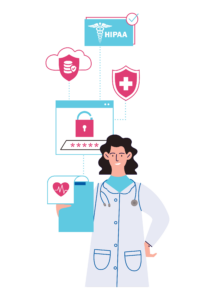Learn the essentials of South Africa's POPIA, its impact on data protection, and how it compares to global privacy laws.
Risk Appetite
Ever wonder how much risk is too much risk? As an individual or organization, you need to determine your risk appetite, which is the amount of risk you’re willing to accept in pursuit of your goals or objectives. Some people have a hearty appetite and thrive on high-risk, high-reward scenarios. Others prefer to play it safe. Neither approach is necessarily right or wrong, but identifying your risk appetite helps ensure you don’t take on more risk than you can handle.
Defining Risk Appetite: What It Means for Businesses
As a founder, understanding your company’s risk appetite is crucial. Risk appetite refers to the amount of risk you’re willing to accept in pursuit of your objectives. It’s about finding the right balance; not too risky but not too conservative either.
For some businesses, a higher risk appetite means taking on more debt or investing in innovative projects that could significantly impact your bottom line, either positively or negatively. If you have a lower risk appetite, you likely avoid uncertainty and only take on risks that you know you can handle.
- Identify your key business objectives and priorities to determine an appropriate risk level. Do you aim for fast growth or a stable performance?
- Consider your industry and business model. A startup likely has a higher risk appetite than an established company. If your revenue depends on a few major clients, you probably aim for less risk.
- Think about your resources and ability to take on more risk. Strong cash reserves and diversified income sources can support greater risk-taking. Limited resources mean less tolerance for uncertainty.
- Determine risk appetite for different areas like investments, product development, partnerships, etc. Your overall risk appetite depends on a combination of these.
- Continually reevaluate as internal and external factors change. What was once an acceptable level of risk may no longer be suitable.
Defining your risk appetite and using it to guide business decisions leads to the best outcomes. With a balanced and well-thought out approach to risk, your company can achieve its goals and reach its full potential.
Establishing a Risk Appetite Framework and Statement
Establishing a risk appetite framework and statement helps ensure your organization takes on the right amount of risk to achieve its goals. As a leader, you need to determine how much risk is acceptable and set limits.
A risk appetite framework outlines your organization’s approach to risk management. It includes risk appetite statements that articulate the amount of risk you’re willing to take on for key areas. For example:
- Operational: We have little appetite for risks that could disrupt critical systems or processes.
- Financial: We have a moderate appetite for risks that could negatively impact our budget by up to 5% in any given year.
- Reputational: We have a low appetite for risks that could damage our brand or public image.
To develop effective risk appetite statements, analyze your key objectives and priorities. Think about worst-case scenarios and how much risk you can tolerate. Be specific by defining risk types, thresholds, and tolerance levels.
Review and update your risk appetite framework regularly based on changes in your operating environment, risk landscape, and business goals. Make sure all leaders and decision-makers understand the framework so they can apply it consistently.
An organization’s risk appetite ultimately comes down to finding the right balance between growth, innovation, and operational stability. With a sound risk appetite framework in place, you’ll have guidance to take on risks in a measured, prudent manner while still moving your organization forward.
So now you know – risk appetite refers to how much uncertainty and risk an organization is willing to take on in pursuit of its objectives. Every company has a different appetite that depends on their priorities, values and goals. The higher the risk appetite, the more risks the organization is open to accepting. The lower the risk appetite, the more cautious and risk-averse the organization is. Understanding your organization’s risk appetite helps ensure you’re making the right decisions and taking on the appropriate level of risk. It provides guidance for seizing opportunities that align with your priorities while avoiding those that could jeopardize what really matters. At the end of the day, recognizing and respecting your risk appetite is key to progressing in a sustainable way.







